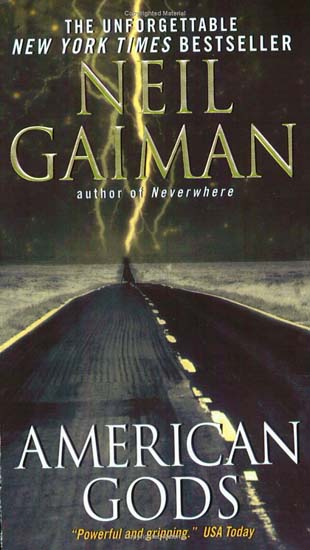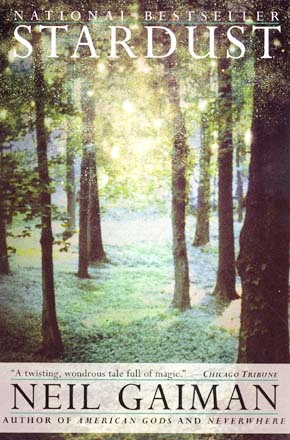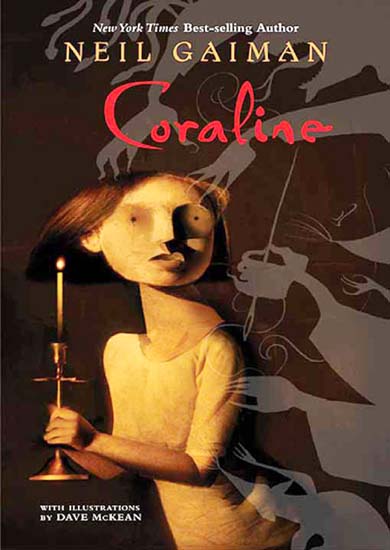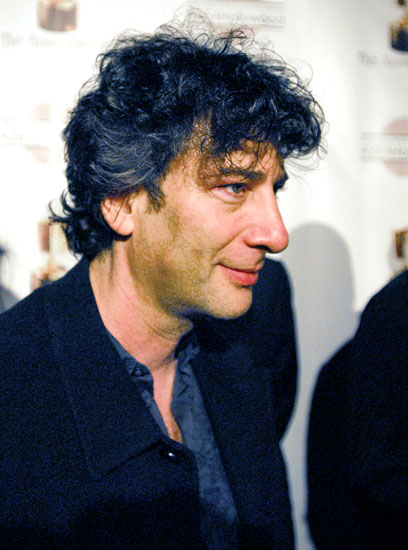


Neil Gaiman doesn’t like to plan things out. At his talk at Royce Hall on Thursday, he described his writing process as “jumping out of an airplane and trying to see if you can knit a parachute on the way down.”
His career seems to be the same way. He began with writing for comics of an astonishing breadth ““ “Sandman,” his first graphic novel, was 2,000 pages and more than a quarter of a million words long. Since then, he’s written short stories, poetry, screenplays and novels; voiced audiobooks; and even created a silent film featuring his fiancee ““ Amanda Palmer, a musician for The Dresden Dolls ““ as a lovesick statue.
Each whimsical twist of his career has brought success in the form of multiple Hugo and Nebula fiction awards, film versions of his novels “Stardust” and “Coraline” and the 2009 Newbery Medal.
It’s as if he possesses a sixth sense ““ a nose for the curious and arcane, or an eye that sees better in shadow than in light. Gaiman draws characters with firm ties to reality and then juxtaposes them against a moody, ghostly fantasy world. The results are dark fairy tales that often spook parents far more than their children. Gaiman’s yarns have generated more than critical success; frequent library-goers know that Gaiman’s books are almost always already checked out.
“Coraline” tells the story of a curious, headstrong girl who discovers an alternate world while exploring a rundown, Victorian-style manor. The alternate world, which eerily resembles her real life, is the creation of the Beldam, Coraline’s Other Mother, who seeks to sew buttons on Coraline’s eyes and keep her in the other world forever. The book, which Gaiman describes as “a horror story for children and adults,” has drawn comparisons to “Alice in Wonderland.” The film version is a stop-motion animated feature directed by Henry Selick with voice work by Dakota Fanning.
“The Sandman” is an epic comic book series that chronicles the adventures of Morpheus, the Lord of Dreams. Morpheus has been held captive for 70 years by an occult ritual and awakens to an unfamiliar modern world. The series, which runs for 75 episodes, begins as horror fiction but quickly becomes an extensive, varied fantasy story. Gaiman called comics a “medium that everyone mistakes for a genre,” and said that he enjoyed the creative freedom allowed by that misconception. “The Sandman” is one of few comic books to have made the New York Times Best Seller List, along with Alan Moore’s “Watchmen.”
“Stardust” was Neil Gaiman’s first prose novel. A young man named Dunstan Thorn glimpses a falling star and retrieves it to win the heart of a girl in his village. He ventures beyond the world of medieval England into the enchanted land of Faerie, where he discovers that the fallen star is actually a beautiful girl with magical properties highly coveted by the land’s magical creatures. It reads just like a classic fairy tale, but it’s never been told before ““ a quality that characterizes much of Gaiman’s work.
Inspired by the narrative structure of Rudyard Kipling’s “The Jungle Book,” “The Graveyard Book” tells the story of an orphaned child who is adopted by the denizens of a graveyard and is taught the ways of ghosts. Gaiman said that the idea came to him in 1985 as he was watching his young son pedal his tricycle in the graveyard across the street from their home in England. Each chapter progresses two years in the boy’s life until he reaches manhood and must confront the assassins who killed his family. The book was awarded the 2009 Newbery Medal.
“American Gods” is an epic fantasy novel, written primarily for adults, based on the premise that new gods have arisen in America, causing conflict with the gods already in residence. The story is told in a gritty, noir style ““ an ex-convict named Shadow is hired as a bodyguard by a god named Wednesday, who is the modern-day manifestation of the Norse god Odin. Wednesday recruits other gods of classic mythology to battle with the new gods, while Shadow attempts to discover his own place in mythology. The book incorporates elements of Egyptian, Buddhist and Russian mythology among many others. “American Gods” has won Hugo, Nebula and Bram Stoker awards for Best Novel.
